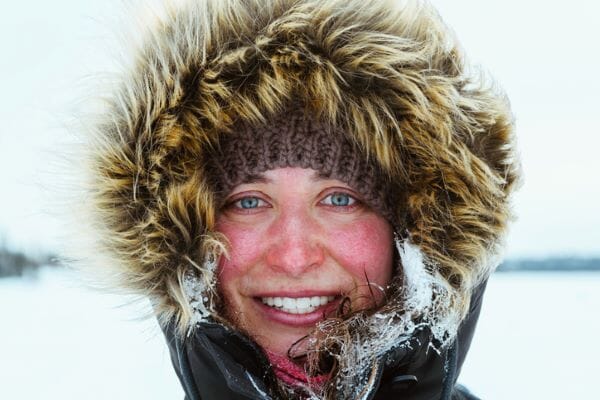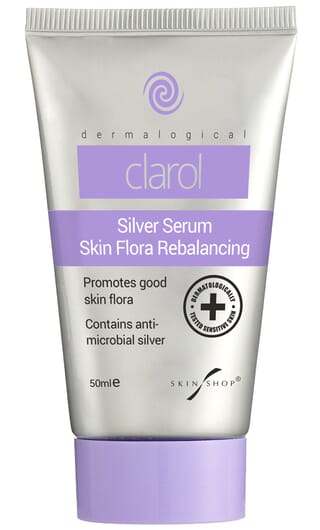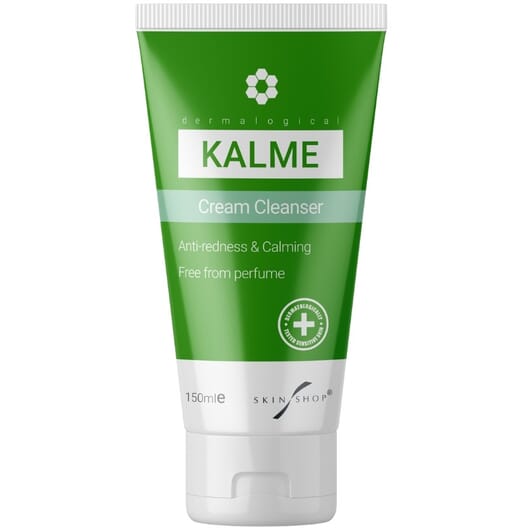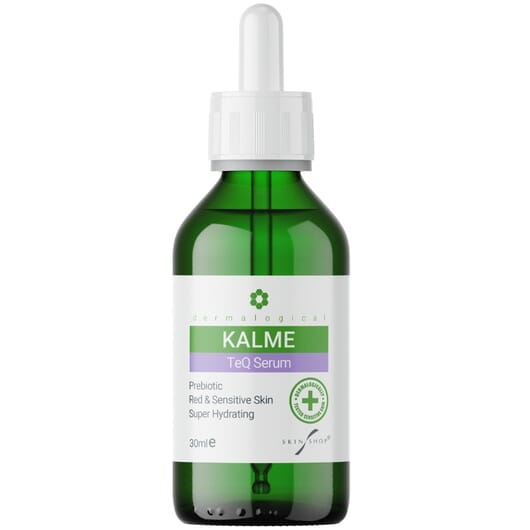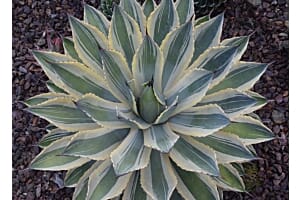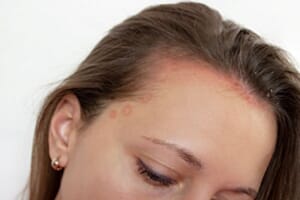Winter can be a beautiful time of the year with majestic frosty mornings, stormy seas, watery winter skies and cosy evenings by the fire.
However, for skin, it isn’t quite such a rosy picture, well in fact that isn’t quite true! It can be a very rosy picture indeed, especially if you suffer from sensitive skin, red skin and rosacea. Although even if you don’t, the harsh winter weather can leave even resilient skin with ruddy cheeks and red and raw feeling skin.
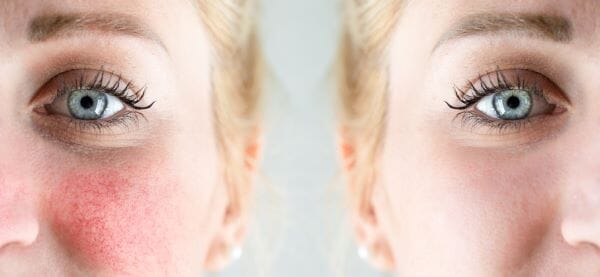
“The dry cold lack of humidity during the winter months coupled with sudden temperature changes from indoor heat to outdoor cold plus recovery from winter illnesses can leave skin extra sensitive, inflamed and dry," says dermatologist Dr Eva Melegh. “For those suffering from ultra-sensitive inflammatory skin conditions such as rosacea, it can be ten times worse and can leave skin red, raw and painful.”
Dr Melegh gives six potential winter triggers for a red face flare and tips on how to reduce the risk of winter red skin flares and winter ruddy skin.
Temperature Transitions
Going from hot to cold during the cold winter weather is one of the biggest triggers for a ruddy red skin flare up, although these temperature transitons are sometimes unavoidable to some degree.
While being able to stay at such a constant temperature during freezing weather is near on impossible, reducing the extremities of these temperature changes can help reduce the likelihood of triggering a red skin flare.

Showering in the morning rather than the evening can help as skin is acclimatised and warm from being in bed. Having a hot shower after getting in from the cold outside is likely to cause the most extreme temperature change. Even worse is showering when getting in from work and then going out again into the cold. Wearing a scarf around the lower face when first heading out into the cold the mornings can also take the shock factor out of the temperature change.
In addition, not turning the heat up too much in the car during short journeys can also help reduce the extremity of the temperature changes as can turning the heating down in the morning half an hour before leaving the house and not sitting near a heater or radiator in the office or immediately drinking a hot drink when coming in from the cold outside.
Antibiotic Recovery
Many people get prescribed antibiotics over the winter to help recovery from bacterial infections. Antibiotics are effective because they kill of a lot of bacteria in order to fight the infection. The trouble is not all bacteria is bad, in fact some is very beneficial for health. So, the downside of taking antibiotics is that we lose a lot of our good bacteria in the fight to combat infections - itls like collateral damage. This also applies to the skin, which needs a certain level of good skin bacteria to stay healthy and resilient.
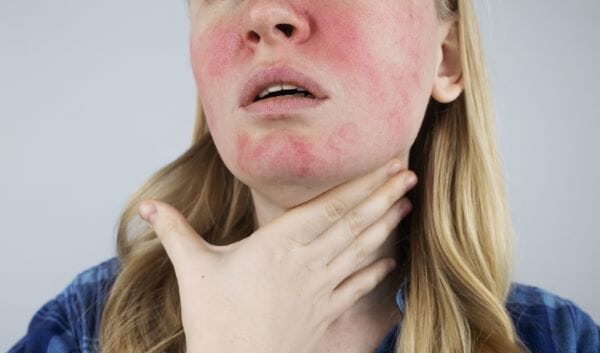
During recovery from antibiotics the skin barrier becomes weaker and more vulnerable letting moisture escape more easily causing dryness and allowing bad bacteria to get into the skin poor more easily and start multiplying. The result is drier and more inflamed red skin.
To help the skin to recover healthier levels of good skin bacteria it can be beneficial to use skincare products that promote the growth of good skin bacteria. Clarol Silver Serum is a smart anti-bacterial serum that contains an ingredient made from silver that actively increases the production of good skin bacteria while being repellent to bad skin bacteria. Using this serum during the winter months after recovery from winter illnesses can help reduce inflamed red skin and winter acne.
Washing With Water
Winter skin is often already drier and more sensitive than normal but washing your face with water can actually make winter ruddy skin even worse.
Water is a very caustic substance that also contains chlorine and so if you have very sensitive skin prone to rosacea this alone can trigger skin flares.
But equally importantly in winter it’s the temperature difference of using warm water to wash your face and the stepping out into cold weather or vice versa that can also trigger a red skin flare due to the sudden vascular dilation of the blood cells below the skin’s surface.
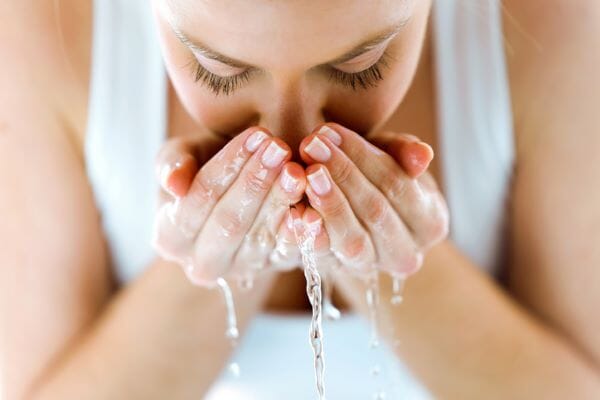
Water-free cleansing with a moisturising cream-cleanser is much more beneficial for winter skin prone to redness. Try Kalme Water-Free Cream Cleanser, which is a deeply moisturising cream cleanser that also contains an anti-redness ingredient to calm down red and ruddy skin.
Richer Creams
Using a thicker moisturiser during the winter when skin starts to feel drier is something that many people think will be beneficial for their skin.
However, at a time when your skin is particularly vulnerable it’s unwise to test-run richer products with multiple heavier ingredients as these are likely to over-burden sensitive skin and may trigger a red skin flare, especially if the products contain alcohol, lanolin or perfumes or multiple preservatives.
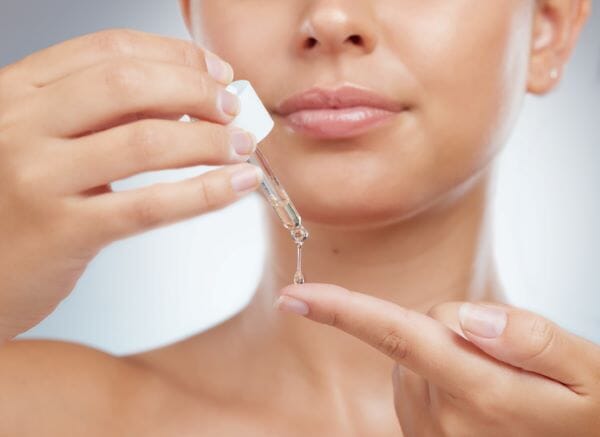
Layering lighter products for extra moisture is better than switching to a heavier cream. Use serums that you can layer under your normal skincare products for additional moisturisation.
Layering a serum under your moisturiser and night cream can offer your skin additional moisturisation without over burdening it. However, if you suffer from a sensitive skin condition or your skin has become problematic in the cold weather it’s important to select a serum that specifically addresses your skin type and ones that contain skin barrier repairing ingredients such a prebiotics, can be especially beneficial for helping to repenish and repair a weakened winter skin barrier. Try Kalme TeQ Serum, which contains two types of skin prebiotic from the agave plant which are also more hydrating than hyaluronic acid as well as an anti-redness ingredient.
Nose Wiping
The constant wiping of a running nose can trigger a ruddier redder complexion for two reasons. The actual chaffing of the nose from the abrasion of nose wiping can damage the skin around the nose and allow bad skin bacteria to get in, causing inflammation and redness.
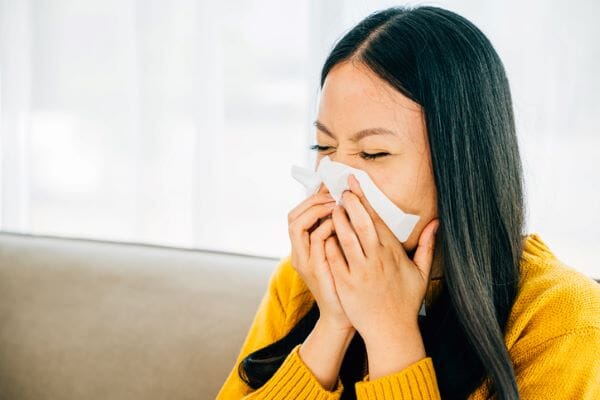
In addition, the frequent wiping of the facial area can spread bacteria from one area to another on the face, spreading the problem into the cheeks and chin.
Try to avoid wiping the nose altogether by dabbing running nostrils rather than wiping the whole nose and using a soft cotton handkerchief rather than more abrasive paper tissues can also cut down on the risk of damaging the skin.
Winter UV Protection
Cold dry winters are abrasive to skin, so winter skin often ends up being rawer and more open, meaning that UV rays penetrate the skin more easily which can trigger a red skin flare as UV damage is one of the most common triggers for red skin flares. Winter sun can be as damaging as summer sun to raw and wind-damaged skin so its crucial to always wear an SPF of at least 20 in winter conditions (and an SPF of 30 or more while staying at altitude in wintry weather) to protect against UV triggered red skin flare ups.
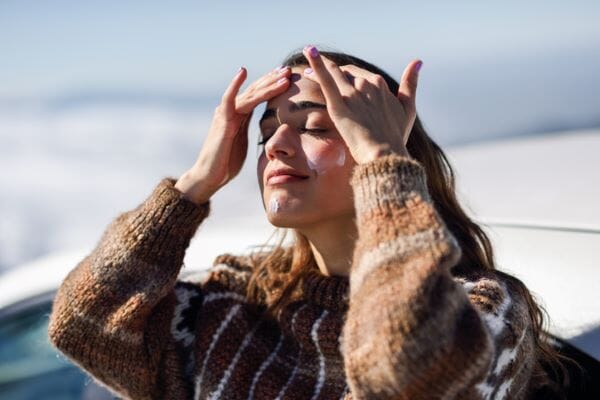
For skin already prone to redness and sensitivity, a mineral SPF such as zinc oxide is more beneficial than a chemical filter as they are less reactive and more stable when exposed to UV rays. Zinc oxide also has anti-inflammatory properties so is beneficial for reducing red and inflamed skin. SPFs with additional moisturisers are advantageous during winter.



